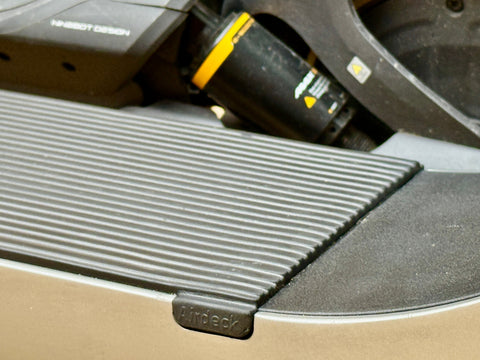Back to the articles
EU Guide - Are Scooters Legal in Your Country?
The 2025 Guide to Electric Scooter Laws Across the European Union
Leni Doge - Bo Customer Support - July 2025
Electric scooters (trottinettes électriques, E‑Tretroller, monopatines eléctricos) are now a common sight in cities across Europe. In many places there have been years of debate and change in the regulation that applies to these vehicles.
The aim of this article is to give a comprehensive update on the latest e-scooter legislation, where we can find data.
We've included a Bo legality column so you can check it out.
Complete Guide to Electric Scooter Laws in Europe and Neighbours – 2025
This table reflects the legal status for personally‑owned electric scooters across Europe:
| State/Country | Scooter Status | Restrictions | Relevant Legislation | Key Dates | Is Bo Legal |
|---|---|---|---|---|---|
| Austria | Legal | ≤ 25 km/h, ≤ 600 W; ride on bike lanes/roads |
StVO § 2 & KFG 1967 | 2019 | Yes, with accessories and correct licensing |
| Belgium | Legal | ≥ 16 yrs; ≤ 25 km/h; no helmet/insurance required |
Mobility Rules 2019 | June 2019 | Yes |
| Bulgaria | Legal | ≤ 25 km/h; helmet encouraged; local regs apply |
Transpose EU168/2013 | 2023 | Yes |
| Croatia | Legal | ≤ 25 km/h; ≥ 16 yrs; ride on bike lanes |
Road Traffic Act | 2023 | Yes |
| Cyprus | Legal | ≤ 25 km/h; ≥ 16 yrs; helmet mandatory |
Road Traffic Regs | 2023 | Yes |
| Czechia | Legal | ≤ 25 km/h; may need insurance in some cities |
Road Act | 2021 | Yes |
| Denmark | Legal | ≤ 20 km/h; helmet mandatory |
New regs | Jan 2022 | Yes |
| Estonia | Legal | ≤ 25 km/h; ≥ 14 yrs; helmet encouraged |
Traffic Act | 2020 | Yes |
| Finland | Legal | ≥ 15 yrs; ≤ 25 km/h; rental licenses required |
Road Traffic Act | Jun 2025 | Yes |
| France | Legal | ≥ 14 yrs; ≤ 25 km/h; insurance & plate; sidewalks banned |
EDPM Decree | 2019 & 2023 | Yes |
| Germany | Legal | ≥ 14 yrs; ≤ 20 km/h; insurance decal required | eKFV | Jun 2019 | Yes, with accessories and correct licensing |
| Greece | Legal | ≥ 15 yrs; ≤ 25 km/h; helmet mandatory | Road Code | 2023 | Yes |
| Hungary | Legal (unclear locally) | Pending 2025 regs; check local | N/A | Pending | Check locally |
| Iceland | Legal | ≥ 13 yrs; ≤ 25 km/h; helmet <16 | Traffic Regs | 2023 | Yes |
| Ireland | Legal | ≥ 16 yrs; ≤ 20 km/h; registration mandatory | Road Regs | May 2024 | Yes |
| Italy | Legal | ≤ 25 km/h; helmet, insurance & plate required | Highway Code update | Nov 2024 | Yes |
| Latvia | Legal | ≤ 25 km/h; ≥ 14 yrs; helmet recommended | Traffic Regs | 2021 | Yes |
| Lithuania | Legal | ≤ 25 km/h; ≥ 14 yrs; ride bike lanes | RTC amendment | 2021 | Yes |
| Luxembourg | Legal | ≤ 25 km/h; ≥ 16 yrs; helmet recommended | Road Law | 2022 | Yes |
| Malta | Legal | ≤ 25 km/h; ≥ 16 yrs; helmet required | Traffic Rules | 2023 | Yes |
| Netherlands | Legal (approved models) | ≤ 25 km/h; insurance & plate required. | Bromfiets Regime | 2021 | Pending, with accessories and correct licensing |
| Poland | Semi‑legal | ≤ 25 km/h; local regs; treated as mopeds | Traffic Act | May 2021 | Yes |
| Portugal | Legal | ≤ 25 km/h; ≥ 16 yrs; helmet encouraged | Road Code | 2023 | Yes |
| Romania | Legal | ≤ 25 km/h; ≥ 16 yrs; helmet encouraged | Road Regs | 2022 | Yes |
| Slovakia | Legal | ≤ 25 km/h; ≥ 15 yrs; ride bike lanes | RTC | 2021 | Yes |
| Slovenia | Legal | ≤ 25 km/h; ≥ 15 yrs; helmet encouraged | Traffic Rules | 2022 | Yes |
| Spain | Legal | ≤ 25 km/h; helmet & plate in some cities | DT 2021 + local bylaws | 2021 & updates | Yes, with accessories and correct licensing |
| Sweden | Legal | ≤ 20 km/h; ≥ 15 yrs; helmet <15; no sidewalk riding | Road Traffic Regs | Sep 2022 | Yes |
| Switzerland | Legal | ≤ 20 km/h; ≥ 14 yrs + license; plate & insurance | VTS regulations | 2023 | Yes |
| EU Average | Legal nearly everywhere | Max speed ~20–25 km/h; age 14–16; helmet varies | Aligning EU standards ongoing | — | Yes |
Stay on the Right side of the Law
The e‑scooter boom in the EU has been meteoric but each country writes its own playbook. While most nations align on a 25 km/h top speed, others like Germany, Denmark, and Sweden limit it to 20 km/h. Helmet rules vary widely, from mandatory under‑16 in Italy/Spain to fully optional in the Netherlands.
Don't let old regulations mislead you, for example Finland just passed major updates in June 2025: no under‑15s, full 0 BAC DUI parity, municipal rental licences, and clear tiered safety rules even for brands.
To the best of our ability these are current, however if you see anything here which is out of date please notify us hello@bo.world or bonjour@bo.world.
Scooter Requirements: What EU Riders and Brands Need to Know:
European nations back a shared baseline of E‑scooter specs:
- Two wheels (some allow up to 3), ≤120 cm long
- Motor power ≤ 1000W everywhere, as low as 250W in Spain, speed ≤25 km/h (20 km/h in a few countries)
- Lights: white front, red rear, reflectors are mandatory after dusk.
- Brakes: dual independent brakes, certain countries with minimum stopping distances.
-
Bell or horn, (this is especially important where pedestrian traffic blends with cycle lane traffic).
- Insurance is obligatory in Germany, Austria, Italy—and soon Netherlands (via registration plates)
-
Helmet laws: mixed—mandatory under certain ages in many countries
- DUI: alcohol & drugs prohibited—e.g. Finland enforces full driver BAC limit (etsc.eu, reuters.com, en.wikipedia.org, de.wikipedia.org, fr.wikipedia.org, theguardian.com, en.wikipedia.org, evz.de, voltes.eu, en.wikipedia.org)
Parking, Safety and More for EU Riders
- Parking etiquette: Always leave a vehicle stood upright; avoid blocking sidewalks, ramps, lobbies, for example Paris fines up to €135.
- Single‑rider only: Two‑person scooting is illegal across the bloc.
- No clinging to cars: EU rules disallow hitching cars (high risk)
- Hands on bars: In some localities one‑hand riding banned (although, in practise we have not heard of this being enforced) - check local language versions: casco in Spanish, boucle in French.
- Headphones: Some countries like Spain ban it outright (€200 fine) (electrotraveller.com, evolt.si).
-
DUI: Full parity with cars in Finland; others apply general road rules.
What’s Coming:
- Netherlands (July 2025): Registration plates and insurance, plus type‑approval, effectively turning E‑scooters into light mopeds (en.wikipedia.org, de.wikipedia.org).
- France (2025): ETSC pushing speed →20 km/h; expect tightening helmet and parking rules (iscooter-france.com).
- EU‑wide standardization?: ETSC advocating harmonised LEV rules (20 km/h and safety certs)—so expect smoother cross‑border travel soon.
Thinking of Riding? Legality Checklist:
- Check national official regs in your local language—start with “trottinette électrique + [country] règlement 2025” for the latest local application of EU regulations.
-
Essential accessories: vehicles featuring lights, reflectors, dual brakes are a legal requirement across the bloc.
-
Follow local parking laws—plaza, trottoir, zona peatonal are all areas where antisocial parking risks fines.
- Certain Laws are Universal: one rider; no clinging; stay sober
The Bo Perspective
We see e‑scooters as a mobility revolution - and Europe is far ahead of our native UK in regulating it smartly. While we see some of the ruling as over-zealous (20kph, for example, is too slow for a robust well-built scooter and awkward comparative to the other traffic) in general the regulation has been good at ensuring access to scooters for individuals.
Our aim with every vehicle we make is to demonstrate how good riding can be. In several states Bo requires accessory packs to be locally compliant, so while we can supply it across the EU we urge that you check locally or contact us on hello@bo.world to confirm what's necessary.
Disclaimer
Bomobility Ltd. has used its best efforts to compile this content, but does not guarantee the accuracy, completeness, or currency of the information.
Laws and local ordinances change frequently and may vary—even within countries. Readers—whether riders, rental platforms, manufacturers, or advertisers—should consult official local transport authorities or legal advisers before acting on this information.
Bomobility Ltd. expressly disclaims liability for any loss, injury, or controversy arising from reliance on this guide.



